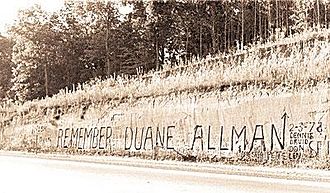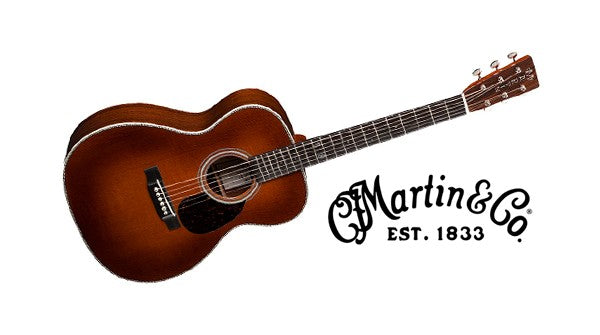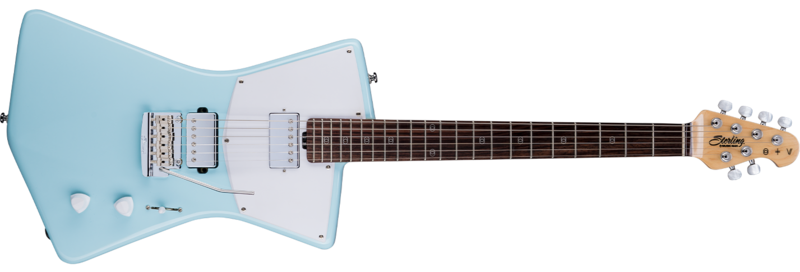Your Cart is Empty
The Best Bands From the First Two Waves of Emo (90‘s and 2000‘s)
September 17, 2020 7 min read
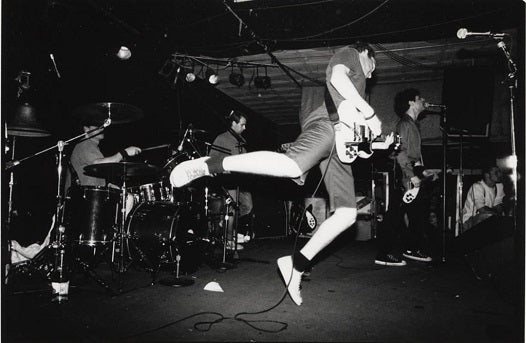
Once the grunge scene exploded into American musical consciousness in the early 90‘s, there was suddenly what seemed like a million punk-inspired bands vying for our attention. As interest in arena rock and 80‘s metal began to wane, punk, grunge, hardcore and nu wave influences coalesced across the country to bring about a movement that came to be called emo, emo-pop or pop-punk.
Sometimes called 'Punk’s moody younger sibling,’ emo music is known for its brooding, emotional lyrics and textured sound which often combines musical elements of math rock, pop and nu wave with the energy and attitude of punk and hardcore. The term ‘emo’ started as an insult hurled at one of the first post-hardcore bands to move in the emo direction named Rites of Spring, but punk fans who were enraged by their convention-defying hardcore music soon came to appreciate the textured sound and emotional expression.
Emo bands are not known for writing the most polished songs or for having ‘professionally sung vocals. Emo is known for presenting intelligently written lyrics about post-adolescent angst in a contrasting musical context full of chimey guitars, chugging basses and driving rhythms. Today, critics and hardcore punk fans are lamenting the commercialization of emo music to the extent that recently one of emo’s leading band members, Jim Suptic of Get up Kids,publicly apologized for the current state of emo as a genre!
Suptic was quoted as saying:“If a band gets huge and they say we (Get Up Kids) inspired them, great. The problem is most of them aren’t very good. What does that say about us? I don’t know. Maybe we sucked. We at least can play our instruments.”
Suptic cited bands like Fugazi and Sunny Day Real Estate as being the main influences for Get Up Kids. In this article we’re taking a look back to the golden age of emo and the bands that spawned a new era in American music.
Fugazi
Post-hardcore trailblazers from Washington DC, Fugazi still enjoys a cult following across the US despite having been on hiatus since 2002. Recording their first demos in 1988, which were madeavailable to the public in 2014, Fugazi was one of the hardest working bands on the punk/hardcore scene, doing hundreds of shows every year.
With their do-it-yourself approach, Fugazi always enjoyed complete artistic independence. Releasing 6 studio albums and 4 EP’s in 14 years, as well as thousands of hours of live recordings, Fugazi never kowtowed to music industry executives or advertisers. In fact, Fugazi has always been a band that stood by their principles. According to Henry Rollins ofBlack Flag, they refused to do any interviews or press in publications that ran ads for alcohol or tobacco. Even when publications like Rolling Stone begged Fugazi to do interviews, they refused unless they were willing to drop their alcohol and tobacco ads. Despite this limited press coverage, Fugazi still boasts a huge cult following!
In 2013, Fugazi began an online archive of theirlive recordings that is incredibly comprehensive. From it we can see all of the shows Fugazi played over the years, literally criss-crossing the country playing small venues and basement shows like the one depicted in the video below, bringing their music to rooms full of high school and college students hanging on their every note.
Fugazi - Waiting Room (Basement Show)
Sunny Day Real Estate

Forming in 1992, Seattle based emo pioneers Sunny Day Real Estate was founded when a trio of lifelong hardcore musicians, guitarist/vocalist Dan Hoerner, bassist Nate Mendel, and drummer William Goldsmith, found their secret sauce in 18 year old lead guitarist Jeremy Enigk and his ‘supernatural falsetto’ voice. In their mature form, Sunny Day Real Estate took off, becoming one of the first Seattle emo band in a sea of flannel-wearing grunge bands. SDRE was pioneering a new sound that combined elements of hardcore, grunge and punk, with dramatic lyrics and sweeping mood changes -- the ingredients to make an early form of first wave emo.
In 1994 the band released their most influential album to date, Diary which included tunes like 'Seven' and 'In Circles', which had what Rolling Stone has called a ‘tectonic’ effect on the music scene, making Sunny Day Real Estate one of the most influential emo bands of the time, prompting Rolling Stone to rank SDRE’s Diary #1 in their40 Best Emo Albums.
Since that time, hundreds of bands have tried to capture the enigmatic brilliance of tunes like In Circles and Seven, without success.
Just before Sunny Day Real Estate disbanded in 1995, bassist Nate Mendel and drummer William Goldsmith were invited to join Dave Grohl’s new band, the Foo Fighters, in which Mendel has remained as the bass player ever since. In fact, Mendel, along with Grohl and guitarist Pat Smear formerly of Nirvana, are the only original members in the current lineup. Although Sunny Day Real Estate reunited twice more, from 1997-2001 and 2009-2013, Mendel stayed with the Foo Fighters, and was replaced by Jeff Palmer and subsequently by Joey Skywardin before they disbanded for good.In Circles - Sunny Day Real Estate
The Promise Ring
The originators of the emo-pop or pop-punk sound, Milwaukee’s The Promise Ring started in 1996 when singer/guitarist Davey von Bohlen, a member of Cap’n Jazz at the time, joined forces with guitarist Jason Gnewikow of None Left Standing, drummer Dan Didier formerly of Ceilishrine, and bassist Scott Beschta. When Cap'n Jazz disbanded later that year, The Promise Ring became von Bohlen’s full time gig.
Building their following through word of mouth and constant gigging, Promise Ring transformed the hardcore/punk sound of early emo into something much more melodic and musical, soon becoming one of the bands that brought emo music into the mainstream. In their six years performing and recording together, the band recorded four studio albums including the massively influential Nothing Feels Good which, more than any album of the 90‘s era, encapsulated the emo movement.
A touring van accident and health problems afflicted von Bohlen in the early 2000‘s leading to lineup changes and eventually to the breakup of the band. Today, it is rare to read an interview of an emerging emo band that doesn’t recognize The Promise Ring as being an important influence.
Is this Thing On? - The Promise Ring
Jimmy Eat World
Jimmy Eat World formed as a punk rock band in Mesa, Arizona in 1993. Shaped by the same musical influences from punk, hardcore, grunge and alternative music, Jimmy Eat World emerged upon the emo scene of the mid-to-late 1990‘s. By 1999, with the release of their sophomore album Clarity, Jimmy Eat World like The Promise Ring would soon carry the emerging emo-pop into the mainstream.
Jimmy Eat World has released 10 albums as of 2019, nine of which were recorded with their current lineup of lead vocalist/guitarist Jim Adkins, rhythm guitarist/backing vocalist Tom Linton, bassist Rick Burch, and drummer Zach Lind. Their most influential effort to date was their 2001 releaseBleed American which had four tracks reach the top 20 alternative charts including ‘The Middle’ which reached number 1.
Jimmy Eat World has always balanced commercial viability with street credibility, and several times in their career decided to finance the production of albums themselves rather than deal with pressure from studio executives.Bleed American was ranked #8 onRolling Stone’s 40 Best Emo Albums list.
Bleed American - Jimmy Eat World
The Get Up Kids
Despite their lasting influence on modern music, as mentioned in the introduction of this article, The Get Up Kids has attempted to disassociate themselves with many of the emo scene they inspired, calling it essentially ‘glam rock’. The Get Up Kids formed in 1995 in Kansas City, Missouri, coming up in the second wave of emo music with bands like The Promise Ring and Jimmy Eat World.
The Get Up Kids gained prominence quickly in the emo scene in the late 1990‘s, touring with bands like Weezer and Green Day, and releasing their most influential albumsFour Minute Mile (1997) andSomething to Write Home About (1998). The Get Up Kids hard driving punk sound was tempered and modified by heartfelt, sensitive lyrics and hyper melodies, making them a staple of the second wave of emo bands in the 1990s
Over the subsequent years, guitarist Jim Suptic and singer/guitarist Matthew Pryor began to experiment with the band’s sound and in 2002 they released On a Wire featuring a more layered, polished alternative rock sound. In 2005, due to internal conflicts, the band split up. In 2008 they reunited for a 10th anniversary re-release of Something to Write Home About and began writing new material. In 2010 and 2011, The Get Up Kids releasedSimple Science andThere are Rules.
Holiday
Death Cab For Cutie
Death Cab for Cutie is one of the most influential indie rock bands of the 2000‘s and 2010‘s, with a sound that deftly straddles the indie/grunge and emo genres. Death Cab for Cutie started as a side project for vocalist Ben Gibbard and producer Chris Walla.
Death Cab for Cutie started in 1997 in Seattle, when Gibbard, then an engineering student, took a break from the power pop band Pinwheel to record a solo project. Producer Chris Walla lent his expertise to the solo project and the demo/solo cassetteYou Can Play These Songs With Chordsbecame a local hit, which is no small feat given the size of Seattle’s music scene especially in the late 90‘s.
The success ofYou Can Play These Songs With Chords prompted Gibbard to form a band and Deathcab for Cutie was born, including Bassist Nick Harmer who was Gibbard's roommate, drummer Nathan Good, and producer Walla becoming the primary guitarist. This quartet would record their first album, which included several re-recordings of Your Can Play These Songs With Chords songs as well as new material.
Death Cab for Cutie has released nine studio albums, four EP’s and several live albums includingTransatlanticism (2003), Plans (2005) andCodes and Keys (2011) on which You Are a Tourist appeared. Throughout the years, members have come and gone to pursue other projects, but Gibbard’s sensitive songwriting, memorable melodies, and the rich, wistful vocal tone has made Deathcab for Cutie one of the most important and influential indie/emo bands in recent memory.
You Are a Tourist - Death Cab for Cutie
What do you think?
These are our favorite emo bands of the 90‘s and 2000‘s. Emo is a genre that’s hard to classify, one of those ‘You know it when you hear’ kinds of things, easily confused with subgenres of punk, alternative and grunge. Bands like Fugazi may be considered more punk than emo, and Death Cab for Cutie may be more on the Indie Rock spectrum but have built on the influence of emo music. In the comments below please tell us which emo bands and songs you like best. Which albums did you listen to most when you went through your emo phase? Let us know, we’d love to hear it!
Leave a comment
Comments will be approved before showing up.
Also in Adirondack Guitar News and Blog
Browse Our Store
Recent Articles
- Left Handed Guitarists Who Learned to Play Right Handed July 13, 2021
- The History and Importance of the Martin 28 Style July 13, 2021
- Adirondack Guitar Profiles: St. Vincent July 13, 2021
- Adirondack Guitar Profiles: John Petrucci May 05, 2021
- How to Turn Your Music Skills into a Career March 30, 2021
